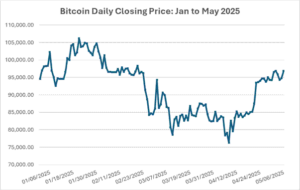According to recently released data, the U.S. economy continues to show strong growth in the third quarter, though potential challenges are emerging. Despite the overall positive growth outlook, there are signs of weakness in the manufacturing sector and rising price pressures that could impact the economic outlook in the coming months.
Strong Economic Growth in the U.S.
S&P Global’s latest data shows that the U.S. Composite PMI for September dropped slightly from 54.6 in August to 54.4 in September. While this drop is small, it indicates some areas of weakness. The PMI is a key indicator of manufacturing and services sector activity, with a reading above 50 signaling economic expansion and below 50 indicating contraction.
Chris Williamson, Chief Economist at S&P Global Market Intelligence, stated that this data points to continued steady growth in the U.S. economy for the third quarter, with an estimated annualized GDP growth rate of 2.2%. Some economists are even more optimistic. For example, Goldman Sachs, as of September 18, forecasted third-quarter GDP growth to be 3%, while the Atlanta Fed’s GDPNow tool projected a 2.9% annualized growth rate.
Other data also supports expectations of solid U.S. economic growth. August retail sales data exceeded expectations, indicating strong consumer spending, which is a major driver of economic growth. Federal Reserve Chairman Jerome Powell recently remarked that the U.S. economy remains in good shape, with inflation cooling down and the labor market holding steady. He suggested that this healthy economic environment could prompt changes in interest rate policy.
Weakness in Manufacturing and Price Pressures
While the overall economic picture looks good, there are notable risks. First, manufacturing activity continues to lag. The manufacturing PMI fell from 47.9 in August to 47 in September, marking the lowest reading in 15 months. A PMI below 50 indicates contraction in the sector.
The services sector, which has been a crucial pillar of the U.S. economic recovery since the pandemic, also showed signs of slowing. The services PMI dropped from 55.7 in August to 55.4 in September. Although the services sector is still expanding, the slower growth rate signals potential challenges ahead.
Another concern is the rise in price pressures. According to S&P Global, price indices in September showed the fastest rate of increase in six months. This suggests that while inflation had cooled in previous months, price pressures are re-emerging in key sectors. Williamson cautioned that rising prices could make it difficult for the Federal Reserve to completely shift its focus away from inflation, even as it aims to support economic growth.
Ongoing Challenges and Outlook
Despite the healthy growth figures, the weakness in manufacturing and rising price pressures could become significant drags on economic recovery. Williamson noted that political uncertainty and the struggling manufacturing sector are now key "headwinds" that could weigh on economic performance in the coming months.
Moreover, with inflation risks creeping back, the Federal Reserve may not be able to pivot to a more accommodative monetary policy as quickly as some in the market had hoped. While Powell recently highlighted the strength of the U.S. economy as a reason to adjust interest rates, he also emphasized that inflation remains a primary concern, especially with the recent uptick in price increases.
A resurgence in inflation could increase pressure on the Federal Reserve to take further action. While inflation rates have been steadily decreasing in recent months, if prices continue to rise—particularly in key sectors like services and manufacturing—both consumers and businesses may face higher costs. This could not only hamper economic growth but also force the Federal Reserve to reconsider its current policy approach.
Key Areas to Watch
While the U.S. economy is on track for strong growth in the third quarter, there are uncertainties that need to be monitored closely in the coming months. The continued weakness in manufacturing and rising price pressures are two key challenges that could influence the economic recovery. Meanwhile, markets are closely watching for the Federal Reserve's next move, as many economists believe further adjustments could be on the horizon depending on the performance of key economic indicators.
In addition, the global economic environment remains uncertain. With the upcoming U.S. elections, ongoing global supply chain issues, and geopolitical tensions, the outlook for the economy may become more complex.
Conclusion
The latest data shows that while the U.S. economy is maintaining strong growth in the third quarter, new challenges are emerging. Weakness in manufacturing and increasing price pressures could become significant obstacles to the ongoing economic recovery. Investors and policymakers will need to closely monitor these trends, as they could directly influence future economic policy and market performance.
As the Federal Reserve continues to weigh its interest rate policies, inflation concerns, and the overall health of the economy, market participants should prepare for potential volatility. The long-term outlook for economic growth remains optimistic, but overcoming these current challenges will be key to ensuring sustained recovery.





